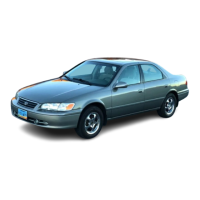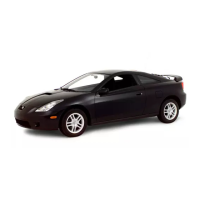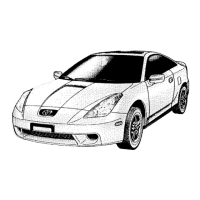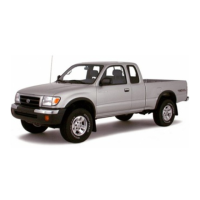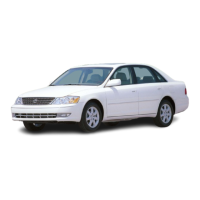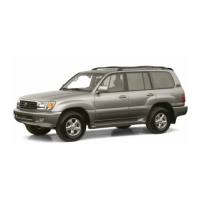241
2000 4Runner (OM35762U)
Remove and replace the reservoir cap by
hand. Fill the brake fluid to the dotted
line. This brings the fluid to the correct
level when you put the cap back on.
Use only newly opened brake fluid. Once
opened, brake fluid absorbs moisture from
the air, and excess moisture can cause a
dangerous loss of braking.
CAUTION
Take care when filling the reservoir
because brake fluid can harm your
eyes and damage painted surfaces. If
fluid gets in your eyes, flush your
eyes with clean water.
NOTICE
If you spill the fluid, be sure to wash
it off with water to prevent it from
damaging the parts or paint.
Checking power steering fluid
If cold add
If cold O.K.
If hot add
If hot O.K.
Check the fluid level on the dipstick. If
necessary, add automatic transmission
fluid DEXRONII or III.
If the vehicle has been driven around 80
km/h (50 mph) for 20 minutes (a little
more in frigid temperatures), the fluid is
hot (60C—80C or 140F—175F). You
may also check the level when the fluid
is cold (about room temperature,
10C—30C or 50F—85F) if the engine
has not been run for about five hours.
a. Clean all dirt from outside of the reser-
voir tank.
b. Remove the reservoir cap by turning it
counterclockwise and wipe the dipstick
clean.
c. Reinstall the reservoir cap.
d. Remove the reservoir cap again and
look at the fluid level. If the fluid is cold,
the level should be in the “COLD” range
on the dipstick. Similarly, if it is hot, the
fluid level should be in the “HOT” range.
If the level is at the low side of either
range, add automatic transmission fluid
DEXRONII or III to bring the level within
the range.
e. After replacing the reservoir cap, visu-
ally check the steering box case, vane
pump and hose connections for leaks or
damage.
CAUTION
The reservoir tank may be hot so be
careful not to burn yourself.
NOTICE
Avoid overfilling, or the power steer-
ing could be damaged.

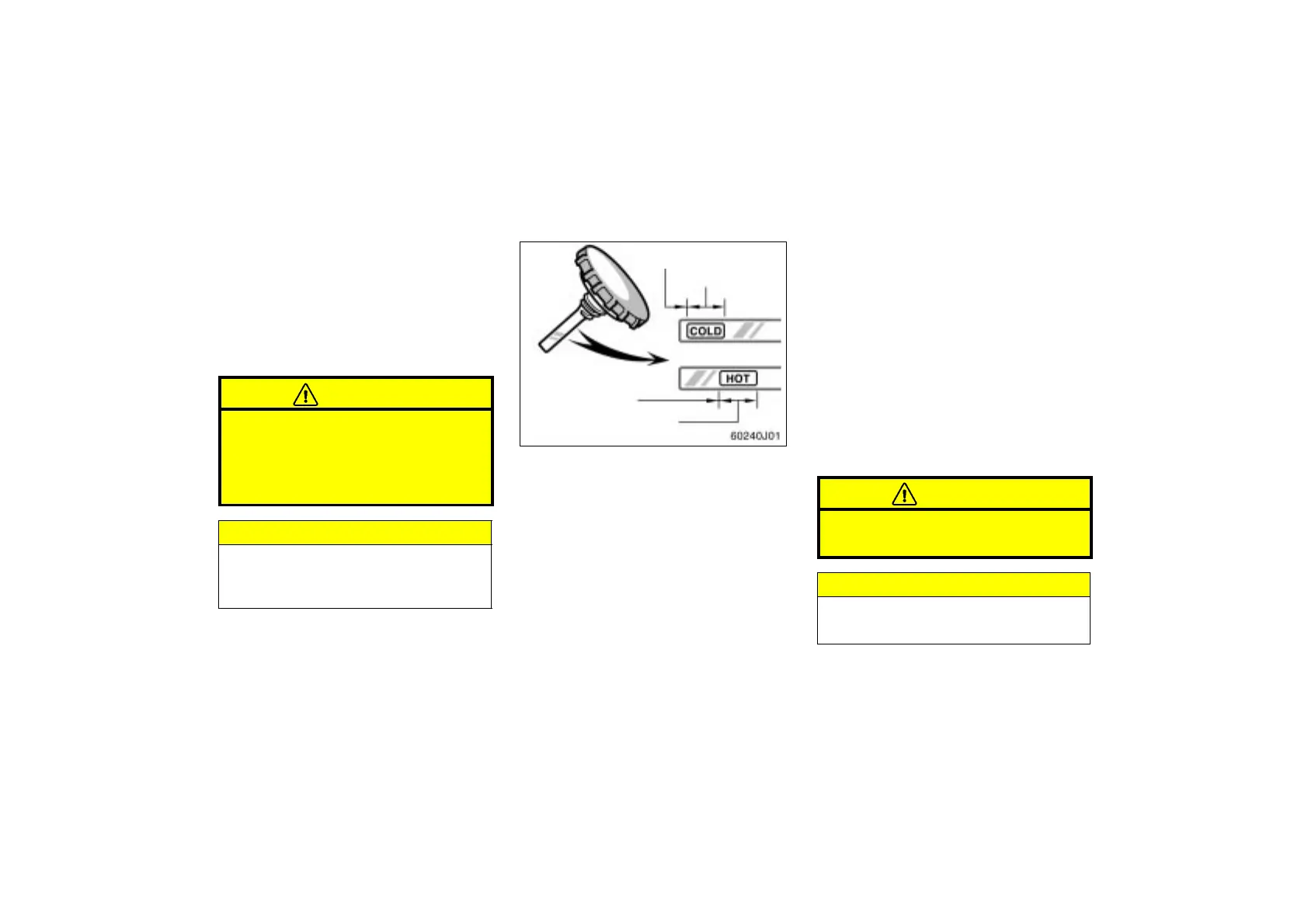